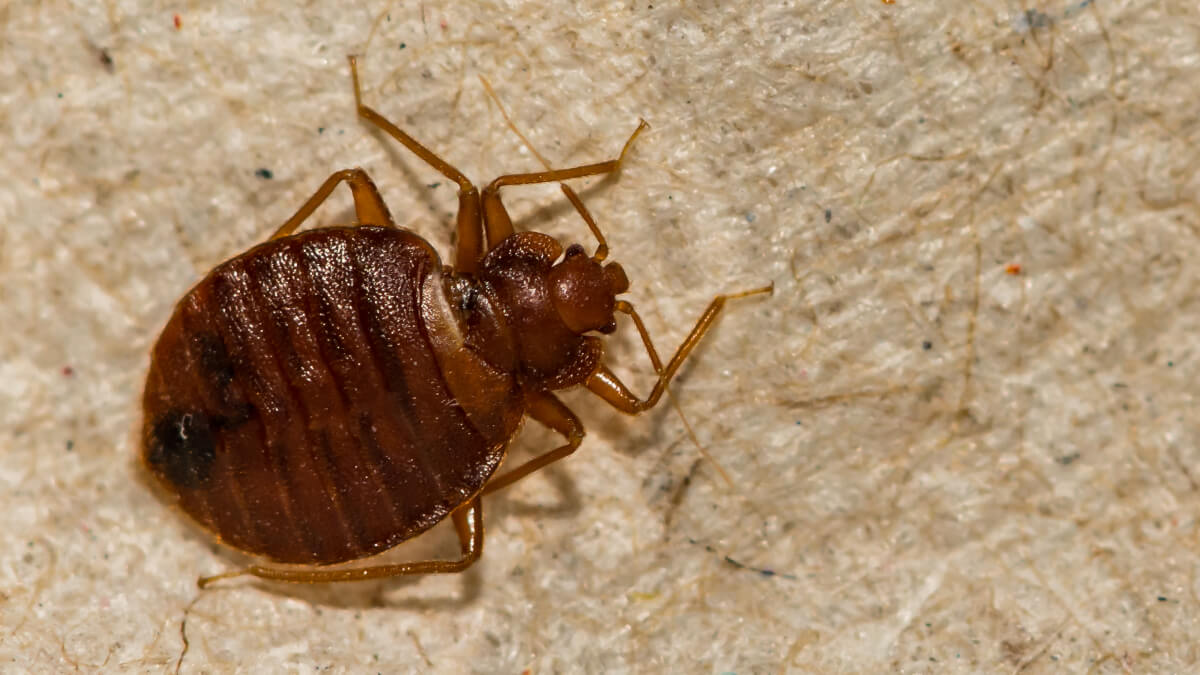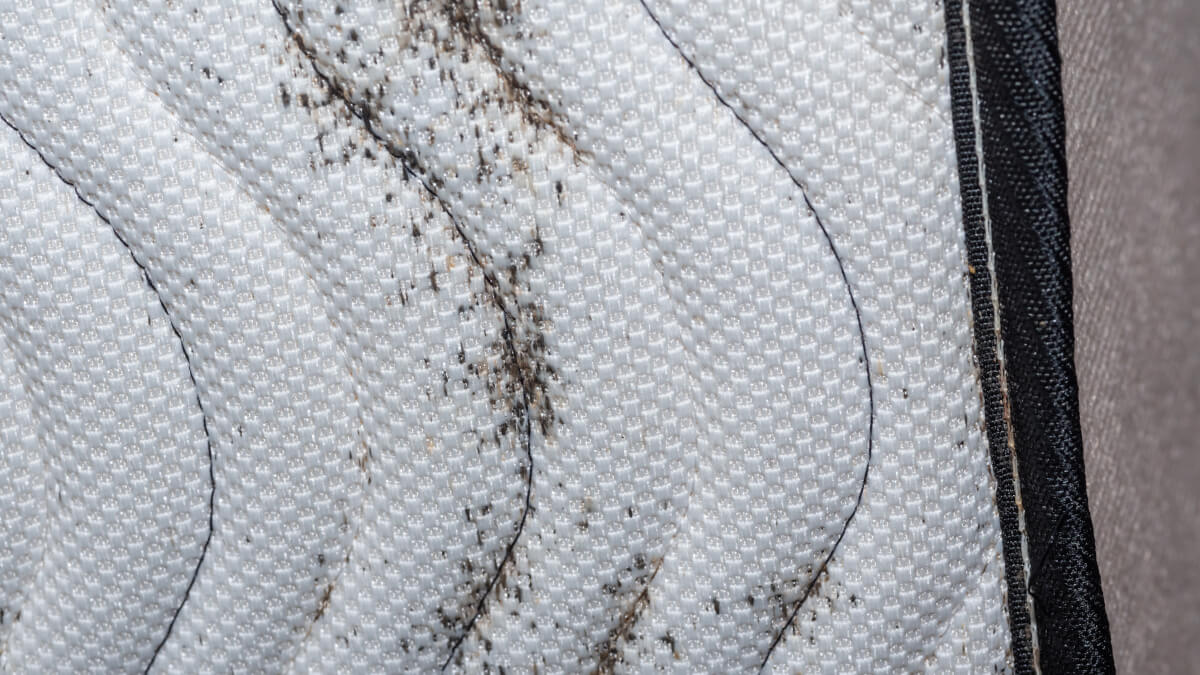What Do Bed Bugs Look Like

Bed bugs are nasty creatures that are difficult to detect and control. A bed bug infestation is often identified late, only after the household notices their bites. Most often, you won’t even see the bugs themselves because bed bugs are active at night. They come out while you are sleeping, inflict a few bites in just about ten minutes and go back in hiding. That is why it is essential to know the signs of an infestation and how to recognise a bed bug when you see one.
Several insect species are known to look quite similar to bed bugs, and this can confuse many homeowners. Moreover, bed bugs might look different depending on where you live in Australia.
To avoid wasting money on pointless and time-consuming treatment of the wrong pest, we’ve put together useful information on how to identify an infestation when it’s present and what do bed bugs look like in Australia. Because once you know you are dealing with bed bug infestation, you will need to take the situation seriously and contact a professional pest control company immediately.
Bed bug appearance

The first step in dealing with pests is to identify the right bug species. For that, you need to know what to look for. It’s important to mention that bed bugs undergo several moulting cycles, throughout which they look differently.
Bed bugs also shed their skin at each stage, and they need to feed with blood at least once before passing to the next phase of the cycle while growing to size and darkening in colour. Though bed bugs might differ slightly depending on the region, there are some appearance specifications that fit all bed bugs.
Now, put your glasses on and let’s begin with the inspection. Here is what to look for:
Adult bed bugs
- Adult bed bugs are usually 5-7 mm long (about the size of an apple seed).
- They have flat oval-shaped bodies that elongate and look more balloon-like after feeding.
- When fully grown, they are brown but shift to brownish-red or dark red when fed on blood.
- They have three pairs of legs, two antennae and wings, though they do not use them to fly.
- They emit a musty smell.
Nymphs
The bed bugs’ larvae are called nymphs. Once they hatch from their eggs, the young bed bugs go through 5 nymph stages until they fully grow into adult bed bugs.
- Nymphs are smaller in size, and their length depends on their stage (1.5-4.5mm)
- Their bodies are translucent or whitish-yellow.
- If the nymphs have not fed recently, they are invisible to the naked eye.
Eggs
- Tiny in size, the bed bugs’ eggs are as large as a pinhead (1mm).
- Their colour is pearl-white.
- If they are more than five days old, they are marked by an eyespot.
What can be mistaken for bed bugs
Bed bugs have doppelgangers that can easily set you on the wrong path of carrying out an incorrect treatment. They can look like many other insect species, sharing similar brownish or reddish colouring, size and shape.
One example can be cockroach nymphs who, although usually white or grey, turn brown when touched. Spider beetles are also dark brown or reddish, but you can distinguish them because they are very tiny in comparison. Carpet beetles have a similar colouring that can mislead you; they are usually dark brown or black, but carpet beetles have easily distinctive wings. On the other hand, Booklice resemble bed bug nymphs by being translucent white, grey or brown.
The bat bug is the insect that looks the most like a bed bug. As you might have already guessed from the name, they feed on bat blood. It is impossible to tell the two insect species apart unless you have a microscope or an entomologist in hand. Yet, the chance you have bat bugs crawling at your home is very minimal, save you have bats as house pets.
Check out: How to Identify Cockroach Eggs
What does a bed bug infestation look like?

If you have noticed a tiny crawling creature in your house and are suspecting a bed bug infestation, you would like to know that there are a few signs that can help you tell if you are really dealing with bed bugs.
To know where to look is important. Bed bugs can be found in various places around the house. They can hide behind the bed frame or the headboard, in the box spring or upholstery, under or in the mattress. However, bed bugs don’t reside only near beds. Check also in wall cracks, loose wallpaper, curtain folds, carpeting, behind pictures or inside clothing.
Even if you check those places and you don’t see the bugs themselves, this does not mean that they are not there. Bed bugs leave signs behind that can let you know what you are dealing with. Here is what to look for:
- Stains: You can spot reddish stains from blood. It can be either from the bites or from a crashed insect.
- Bed bug excrements: The excrements look like small brown or black dots. You can notice stains, too, that will appear blurry.
- Shells: Eggs, eggshells or moulted exoskeletons are a key sign of a bed bug infestation.
- Bites: Bed bug bites can be mistaken for bites from other insects. Check the following section to learn how to identify bed bug bites.
Identifying bed bug bites on humans

Bed bugs, unfortunately, are bloodsuckers and favour feeding on human blood. Their bites are itchy, sometimes painful, and they can even cause unwanted reactions. The bites can be similar to those of fleas, mosquitos, body lice and scabies, so to be able to identify bed bug bites, read on and find out what they look like.
Bites are usually three to four, lined or grouped close to one another, mostly on areas of the human body that are exposed during sleep, such as the arms, legs, hands, face and neck. They look like reddish, swollen bumps that are darker in the centre, and their size grows from 2 mm to 4 mm. Symptoms of bed bug bites include intense itching, especially in the morning, the appearance of small blisters on top of the bites, and burning in the area. In some cases, an allergic reaction, defined by redness and swelling, can appear. If this happens, contact a medical professional.
Takeaways
- Bed bugs go through several moulting stages during which they shed their skin and change their appearance.
- Adult bed bugs are brownish and about the size and shape of an apple seed, but their larvae look quite different.
- The signs of a bed bug infestation include blood stains, faecal spots, shells and bites.
- Bed bugs are bloodsuckers, they feed at night, and their bites itch and look like red bumps.
- If you are dealing with bed bug infestation, turn to a pest control company for help.